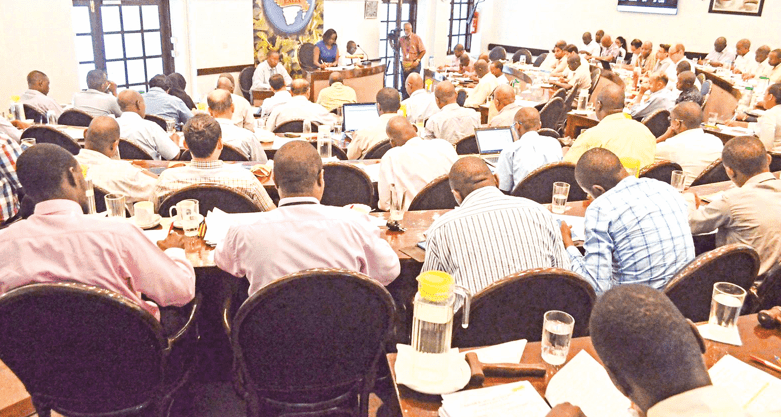Covid pushes Saccos bad debt provisions to Sh11b

A reduction in the quality of loans due to pandemic, erratic weather patterns and non-remittance exposed local Sacco’s to loan defaults in 2021, sector regulator has revealed. Provisioning for loan losses substantially increased from Sh5.08 billion reported in 2020 to Sh10.60 billion in 2021, indicating there was deterioration on the quality of loans.
Sacco Societies Regulatory Authority (Sasra) attributed this mainly to Covid–19 and erratic weather patterns and non-remittance of dues which affected repayment of loans. The regulator in the Sacco Supervision Annual Report, 2021 shows that the number the non-remittances of Sacco dues by institutions still continue to weigh down the sector performance.
Last year, non-remittances by institutions to Saccos recorded a slight improvement to hit Sh3.4 billion, a 32 per cent drop from Sh5 billion reported in 2020.
While public universities and tertiary colleges account for 38 per cent of the total non-remitted, they also registered most drop of 56 per cent to end with Sh1.29 billion from Sh2.95 owed in 2020.
“The DT-Saccos were owed the highest proportion of non-remitted funds amounting to Sh3.01 billion; while the NWDT-Saccos were owed a cumulative sum of Sh0.39 billion for the period ended December 2021,” the report reads in part.
Non-remitted funds
Sasra says that despite the total non-remitted funds having substantially reduced, the outstanding amounts of money are still very high and continues to have negative impacts on the financial performance and stability of Saccos.
The report points out that the sub-sector was owed a total of Sh3.40 billion for the period ended December 2021, composed of Sh2.16 billion being non-remitted loan deductions constituting 63.34 per cent of the total non-remitted funds; and Sh1.25 billion being non-remitted BOSA deductions constituting 36.76 per cent of the total non-remitted funds. During the year under review, the total deposits for Saccos grew to Sh564.89 billion from the sum of Sh514.46 billion recorded in 2020.
The 176-deposit taking Saccos had the largest proportion of the total deposits’ portfolio amounting to Sh474.25 billion and representing 83.95 per cent of the industry’s total deposits.
On the credit front, the sub-sectors’ gross loans increased by 9.67 per cent in 2021 to reach Sh608.75 billion from Sh555.05 billion reported in 2020.
Gross loans
Saccos total assets increased from Sh734.22 billion in 2020 to reach Sh807.11 billion in 2021, representing a cumulative average growth of 9.93 per cent which, according to the report, can be directly attributed to the increase in loans and credit facilities issued Saccos over the same period. The deposit-taking Saccos’ share of the gross loans amounted to Sh522.25 billion, representing 85.79 per cent of the gross loans issued. The 185-Non-Withdrawable Deposit Taking (NWDT) Saccos (commonly known as BOSAs) share of the gross loans amounted to Sh86.50 billion and representing 14.21 per cent of the industry gross loans.
High retention
Interest expenses on deposits to total income increased by 2 percent in 2021 and is a demonstration that members of Saccos across the country earned more on their deposits than in the previous year.
Notably, high retention of surplus led to increased industry capitalisation during the year 2021 giving Saccos the much-needed funding to invest back in the business. t is, however, observable that despite the NWDT Saccos being the majority in number and accounting for over 51.25 per cent of all the Saccos in the sub-sector, their proportionate membership accounted for a paltry 7.68 percent of the sub-sector’s total membership.
However, DT-Saccos which accounted for 48.75 per cent of all the Saccos had a combined proportionate membership of 92.32 per cent of the total membership in the sub-sector.












